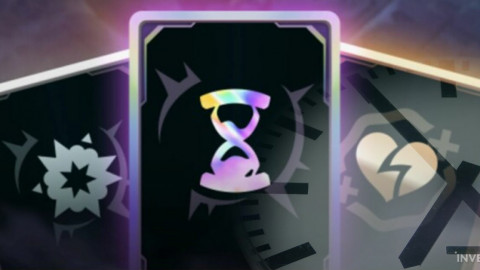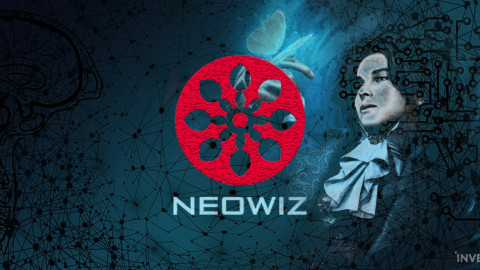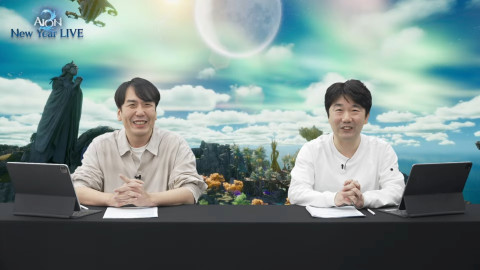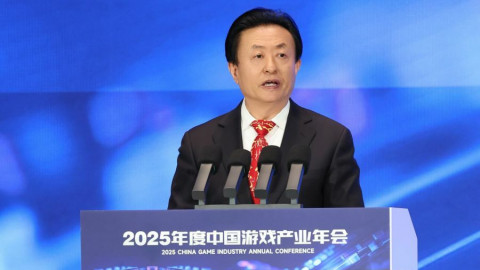
Ambitious, fresh, but most of all: a big step in the right direction. When Blizzard announced its plans for the 2018/2019 Hearthstone Championship Tour in December last year, it was lauded from about every angle imaginable. An increase in prize money and a system designed to reward consistency had slowly been approached over the years, but with the introduction of the Masters System finally seemed to be conceptualized.
A major – if not the most important – part of the change was the increased attention towards tournaments. Already existing and HCT point granting tournaments were fit into a schedule together with new tournaments, giving the Americas, Europe and Asia-Pacific all an equal amount of tournaments held. China, as is usual, is doing its own thing.
Starting in the Year of the Mammoth, with the first Tour Stop qualifiers taking place before the 2017 World Championship had even taken place, the 2018/2019 Hearthstone Championship Tour is already five months underway, now in Hearthstone’s Year of the Raven. High time to evaluate the path that’s been walked thus far, and point out what went right and wrong. I spoke with Veteran Hearthstone professionals Dima “Rdu” Radu, Paul “Zalae” Nemeth, Raphael “Bunnyhoppor” Peltzer and Julien “Cydonia” Perrault so they could weigh in with the experiences they’ve had so far.

Scheduling of Events
A quick look at the HCT agenda of 2018’s first half shows quite a tight schedule. That’s even without listing sign-up dates for Tour Stops that have no open qualifier but require players to travel to the tournament and qualify on the spot. The schedule is so tight, that there is an overlap of events in every month. Players playing in the 2017 World Championship, HCT Sydney, Copa América 2, or Asia-Pacific Playoffs all missed out on another event as a direct result of the agenda. One note: while in January multiple online qualifiers were held simultaneously, those were for different regions for different tournaments; those didn’t overlap.
“They’re scheduling events to conflict with their own system. It’s not smart,” Zalae says, also referring to the end-of-the-month Legend finish players try to acquire for a large number of HCT points. To give an example: the qualifiers for HCT Taipei were held right at the end of March. And that’s not accounting the travel from and to other events, which prevented players from grinding online in other months. Zalae: “HCT stuff at the end of the month has happened multiple times, which shows a lack of understanding from Blizzard of the importance of using a month’s last few days for ladder points.”
It’s not just the schedule itself that adds pressure: announcements don’t follow a schedule, are vague and sign-up times don’t account for other HCT events. Just this week Riku “YAYtears” Miyao pointed out how Japanese players missed sign-up for HCT Tokyo due to a translation error.
Although big improvements have been made from Blizzard’s communication side, the company still struggles with providing information on a consistent basis. Cydonia: “There is a huge amount of stress on players when watching Twitter for announcements, waiting lists [for tournament spots], open qualifier registration, hotels, travel plans etc. All need to be micromanaged on a daily basis on top of ladder, streaming and performing. In an ideal world, all events for one season would be announced at the same time, say 45-60 days before the start of a season, and players could decide which ones to attend and plan their travel for the whole season at once.”
Going forward, the schedule needs adjustment. Should a player want and be able to attend every event, that should be possible. A clear, structured calendar is absent from Hearthstone’s Esport website. There are three Tour Stops scheduled for July – none of them are listed under “compete” on Blizzard’s schedule page. Organizations licensed to host a Tour Stop naturally promote their own tournament too, but it’s up to Blizzard to provide all the information to as many players as possible, as soon as possible.

Tournament Format and Structure
A total of twelve Tour Stops have been held thus far, including the currently ongoing DreamHack Summer in Jönköping, Sweden. Asia-Pacific, Europe and the Americas all have hosted four Tour Stops so far, with each region hosting one more in July to round off what Blizzard has titled “Season 2”. Five of those tournaments had online qualifiers, of which Europe held one, the Americas two, and Asia-Pacific two. It’s here that the imbalance shows up: the sixth one isn’t in Europe, it’s in Asia-Pacific.
“What if at DreamHacks I didn’t have to change my seats every round?”
Tournaments with online qualifiers hold three of their four qualifiers only for players from the tournament’s region, and then even the global qualifiers are accessible for those who competed in region-specific qualifiers. Yes, the six LAN-tournaments are more accessible for players from that region, but at least players from other regions have an equal opportunity to attend the tournament. Of course, Blizzard still has the opportunity to balance this in the remainder of the year.HCT Tokyo, for example, is holding global and local qualifiers on the same date, forcing local players to choose.
“Ideally most tournaments have online qualifiers. Without the region-lock thing, though,” Rdu says, “It sucks so much that a region has four [opportunities], and global only has one. Maybe two region-locked qualifiers and two global qualifiers would be fair.” Cydonia takes Blizzard’s position into account: “It makes sense, since it would be expensive to fly 10 players from Europe to every venue. [It’s] a bit unfair though. Also, this might be an unpopular opinion, but I feel there should be priority spots [in online qualifiers] for pro players, or players with a certain amount of HCT points. Zalae echoes the counter-arguments Cydonia brought up regarding only having global qualifiers: “That would cost Blizzard more money buying longer flights. I don’t think giving a region bias to a local tournament is all bad.”
The time online qualifiers take is an issue Bunnyhoppor is torn on, especially thinking back to the HCT Germany qualifiers: “[A] Double elimination [bracket] seems to take too long. Single elimination is preferable.” But isn’t single elimination the most hated format in Hearthstone? “Still better than playing 18 hours though. It just takes too much time.” Increasing the amount of days a qualifier takes isn’t an option either: “People that aren’t [invested] full-time don’t really have time for that. They also cannot hold qualifiers during the weekend, because that’s when Tour Stops happen.”

The four have far more thoughts on the LAN Tour Stops, like EGLX in Toronto and the famous DreamHacks. Cydonia: “It is great to travel, compete and most of all hang out with other players since the HS community is so great.” Bunnyhoppor underlines the necessity of the LAN tournaments: “LAN tournaments are nice and necessary so that local players can be part of a tournament.”
That is not to say there aren’t big improvements to be made. “I just wish there would be more rounds of Swiss for how many players there usually are at a Tour Stop. A perfect World would have nine rounds of Swiss, with a 7-2 score making it. Like how the 200-payer DreamHacks used to be,” Rdu says, referring to the problematic tiebreaker system, which sometimes has players rely on their former opponent’s final score in the Swiss phase to make it through.
"I feel like a lot of people are going to burn out in this system if things don’t change"
Zalae also thinks more games need to be played, though he sees the obstacles: “Generally, if Blizzard wants to increase the competitive integrity of Hearthstone they need a larger sample size of relevant games in each tournament. They need to work on optimizing logistics so they can fit more Hearthstone in a given unit of time. It doesn’t seem to be on their radar as a goal or possibility though.” Adding more days to an event wouldn’t solve much, according to Zalae, as the event would cost both Blizzard and the attending players more money. He does offer a glimpse of a possibility, though: “What if at DreamHacks I didn’t have to change my seats every round?”
The fact that tournaments have had different formats isn’t much of a problem to the players. Rdu: “I don’t mind different formats. It would be boring to play the same format every time.” Cydonia agrees, but referring to HCT Seoul’s format adds: “I strongly disagree with segregating groups based on region. The global group was way more stacked than others. (…) I think seeding based on points is great and should be used more.”
In an attempt to bridge the issues, Rdu proposes a hybrid system. A month before an event, global qualifiers are held, through which (for example) eight players qualify. Then at the event itself, only players from the region play LAN, and again eight players qualify. Those local players then face off against the eight global players (who have been flown in) in the top sixteen. It vastly reduces the cost for global players, and still brings the fun of playing in LAN events.

The Value of Attending a Tournament
But what is there to get at the Tour Stops? Is it worth traveling for? While overall Blizzard has commendably invested more money in the scene for the fourth consecutive year, having this many Tour Stops means that money is spread out. Too thinly, Bunnyhoppor thinks: “People shouldn’t simply travel for the chance at HCT points.” Referring to DreamHack Tours specifically, he adds: “The prize pool was a joke.” So what can the players expect from a Tour Stop?
All Tour Stops had the same prizes: a $15.000 prize pool and 191 HCT points, split across the top 32. It’s a bit bleak considering hundreds of players travel to LAN events: DreamHacks used to have $25.000 prize pools. “The EV [estimated value] of a 300 player tournament with a $15.000 prize pool is about 50 dollars. Maybe more if you’re really good, but it’s always less than the amount you’ve spent to go there,” Rdu says, emphasizing that even if you convert HCT points to money, it’s all still a chance at a small cut.
The sentiment is shared by three players, but Zalae remains neutral: “It’s their [Blizzard’s] business, they get to crunch the numbers and do what they think is best for them. They did put more money into the system as a whole this year.”
Oddly enough, HCT Seoul differed from the other Tour Stops, boasting a prize pool of $25.000. Out of the three remaining Tour Stops in July, the one in Italy has the same, considerably larger prize pool. HCT Tokyo, on the other hand, sticks to the $15.000. Perhaps Blizzard is testing the waters with increased prize pools. Hopefully they’ll fully dive in said waters soon.

The takeaways, big and small ones
The system Blizzard has introduced for its 2018/2019 Hearthstone Championship Tour promised a lot, and on a lot of subjects it has delivered – including adjustments Blizzard has made while the season was well underway. Cydonia:“Big improvements have been made, especially open decklists in all events was super important for fairness. I tend to be super critical (…) but it is a lot better now on average than it was at the beginning of the year.”
There are relatively small issues Blizzard has learned from, and some they definitely will have to learn from: “Oslo was nice, but had internet issues which was very bad,” Bunnyhoppor says, referring to not-working WiFi and the fact that players had to bring their own internet cables, creating chaos when swapping seats. DreamHack Tours, too, wasn’t too well-received. With the event running late, players found themselves stuck in the middle of nowhere without transport. “Walking an hour to your Airbnb after starving all day is no fun,” Cydonia remarks, noting that on the flipside, the Tour Stops in Bangkok, Seoul and Austin were a pleasure to attend.
But for all the good the changes to the HCT system has brought, Blizzard might have been a bit too enthusiastic. The high rate of Tour Stops combined with a thinly spread prize pool has increased the pressure on players a lot. Rdu: “I feel like a lot of people are going to burn out in this system if things don’t change. (…) I wouldn’t mind most things if it was sustainable to go to these events.” Cydonia too worries about the sustainability of the system: “With the announcement of the Master Tier and Team Standings, it feels like Blizzard is trying to make it possible for players to have a pro status and make a living off of Hearthstone. But on the other hand prize pools and team incentives are too low to guarantee a decent salary to even very successful players.”
Bunnyhoppor thinks Blizzard needs to reel it in a bit to improve the scene: “There should be fewer, but better organized Tour Stops with more prize money. That would also make for less qualifiers.” Loud and clear, a message outlining the next big improvements to competitive Hearthstone.
Images via Blizzard Entertainment and Smash.gg
-

Storyteller by heart. If something is competitive, I am interested in it.
Sort by:
Comments :0





